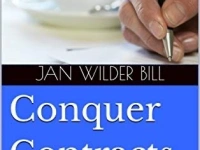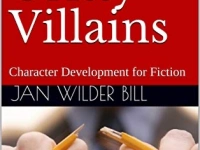Photo: Harry’s Vanishing Teacup by J. Wilder Bill
A stimulating plot consists of twists and turns, ups and downs, highs and lows – all accomplished by variety in the types of scenes. Intentionally distinguish the purpose of each scene to avoid repetition in the pacing of your storyline. The following are a selection of scenes you can incorporate in the foundation of a well-crafted storyline.
Opening Scene: There will be one opening scene and it serves a critical purpose. Introduce the protagonist to the reader and establish the mood of the story. Inner thoughts or immediate action aid with revealing the mindset of the character. Make clear the underlying question of the overall story.
Conflict Scenes: It is no secret that conflicts are critical to a story. Conflicts results in attentive readership. After developing the protagonist with the opening scene, reveal what is at stake. Introduce a critical event. Conflict surfaces when two characters desire a different outcome. Emotions are peaked and character flaws exposed; however, make the reactions fit the personality types of the characters. Don’t force the characters to respond in a way that will justify having a conflict. Allow the conflict to develop over time and subtly by mentioning the resistance or negative thought prior to the conflict scene. The conflict can be internal and unjustified. The only requirement is for a struggle to warrant more than one possible result.
Setup Scenes: Provide background information during setup scenes to orient the reader within the setting. Use the past to establish the intentions of the protagonist and evoke empathy regarding his current circumstances. Setup scenes link together the elements of the plot and give depth to the characters. Insights about the characters’ past provide their motivation to take action, thereby propelling the plot forward. Include family and economic background of the characters to spark readers to care.
Confirmation Scenes: Following each setup scenes, the movements and thoughts of the characters confirm the background information by revealing the results of the past. If you mentioned that your protagonist’s mother died in a car wreck, take time to describe her reaction to a traffic jam due to a jack-knifed 18-wheeler. Make sure you confirm previously provided information about the characters at a point in the plot that will provide the most impact. For instance, don’t talk about the car wreck after she takes a shower and before she gets in the car.
Time Warp Scenes: Pacing the plot invites the protagonist to think of his past or even wonder about his future. Time warp scenes supply critical information the reader must know before understanding what is to follow. Make the time change obvious, whether it goes into the past or into the future. Keep the reader oriented as to the place and when the situation occurred. To justify the lull in action, only shift to a different time when the past or future is more intense than the current situation. Do not remain in the time warp for a long. Remember that shifting to the future thrusts the reader out of the story. Consider beginning the story at the point of the flashback, thus making it a current event.
Obstacle Scenes: Instill complexity in your plot by preventing the characters from attaining their desires during several obstacle scenes wherein a physical force prevents him from moving forward. Emotional impact rises when outside forces prevent the character from reaching her intended outcome. Give the protagonist a morsel of his desire and then replace his advantages with difficulties without losing momentum in the storyline. Obstacle scenes intensify the plot with suspense. Allow the protagonist to believe she is reaching her goals and then reveal that she is on the wrong path. The more setbacks, the more heightened the resolution becomes. Make sure the obstacles are unique for your circumstances.
Pivotal Scene: Allowing the protagonist to overcome the obstacles, show his suffering from mistakes, and resolve any misunderstandings in his relationships, then slap him with a sense of having no solution to an even greater problem. Only one pivotal scene will be in each novel. This bleakest moment provides greater impact than the obstacle scenes. Sensationalize the impact with an uncontrollable force the protagonist is unequipped to handle. It could be making the wrong decision or having a fallback to prior destructive behavior. The solution of the pivotal scene invokes disharmony and additional suffering. Follow the pivotal scene with several more obstacle scenes and then one final, blow-out conclusion scene.
Climax Scene: The plot guides the reader to one climax – the moment the obstacles are resolved and the desires are fulfilled. The peak of the plot is the most significant moment in the protagonist’s life of the novel. Her mental state rises above the outstanding issues and inner conflicts. A love scene can climax as a man vows to remain with a woman even if they never resolve their differences. The end of a chase or resolution to a question other ways to reach a climax.
Conclusion Scene: At the end of your story answer open-ended questions and fill in the blanks. Ease the reader out of the story instead of providing a jarring halt to the events. Provide a sense of contentment like a flavorful desert to clear the pallet.
It takes a flavoring of the different type of scenes to satisfy the reader’s senses. Keeping track of what types of scenes you have guarantees your plot will be balanced. Clarity of mind sparks the imagination. An easy way to keep up with the types of scenes you have created is by underlining the text in a color you have selected for each scene type. The colors provide a visual as to whether you have provided the right amounts of each element to your storyline.












Leave a comment